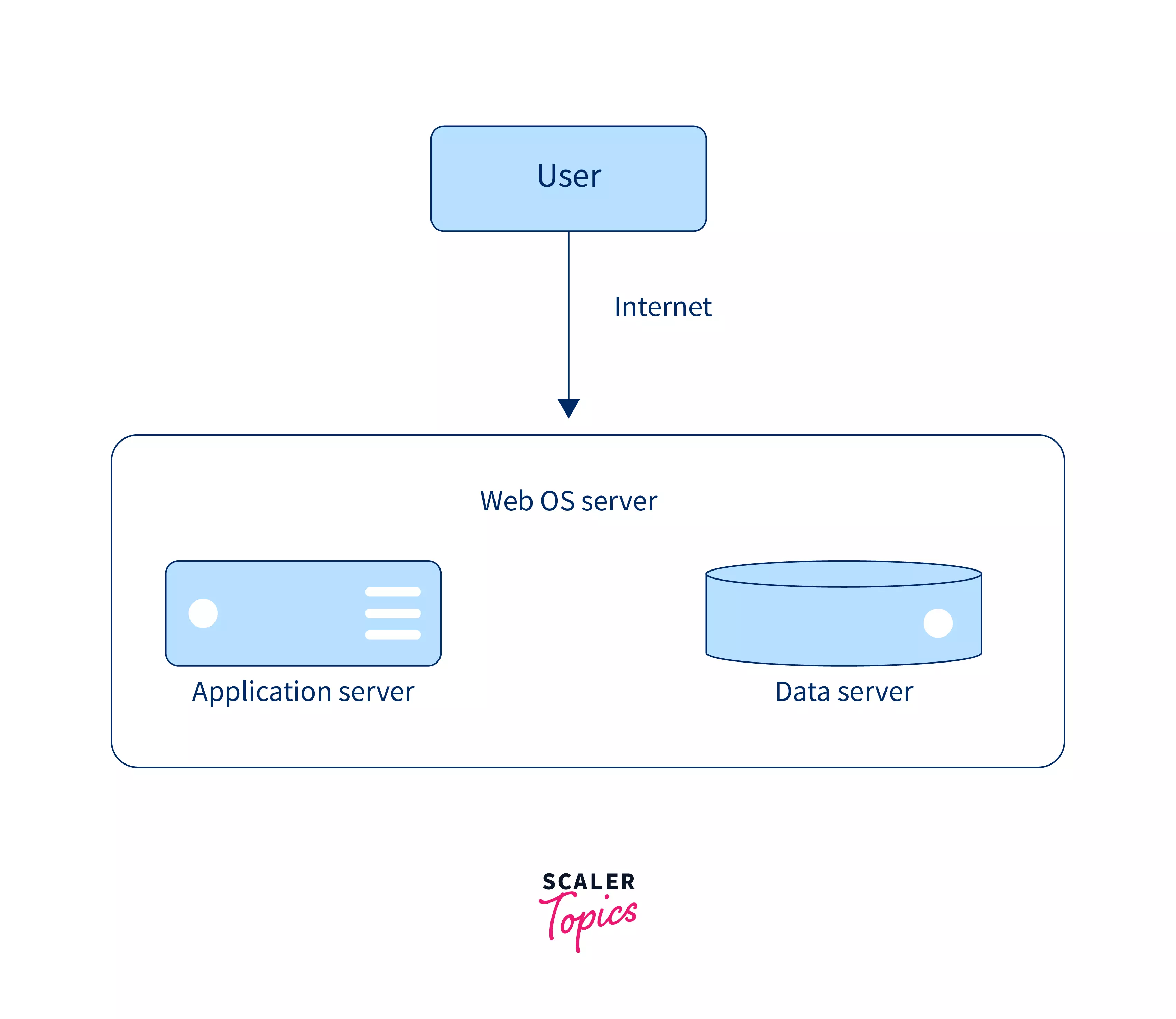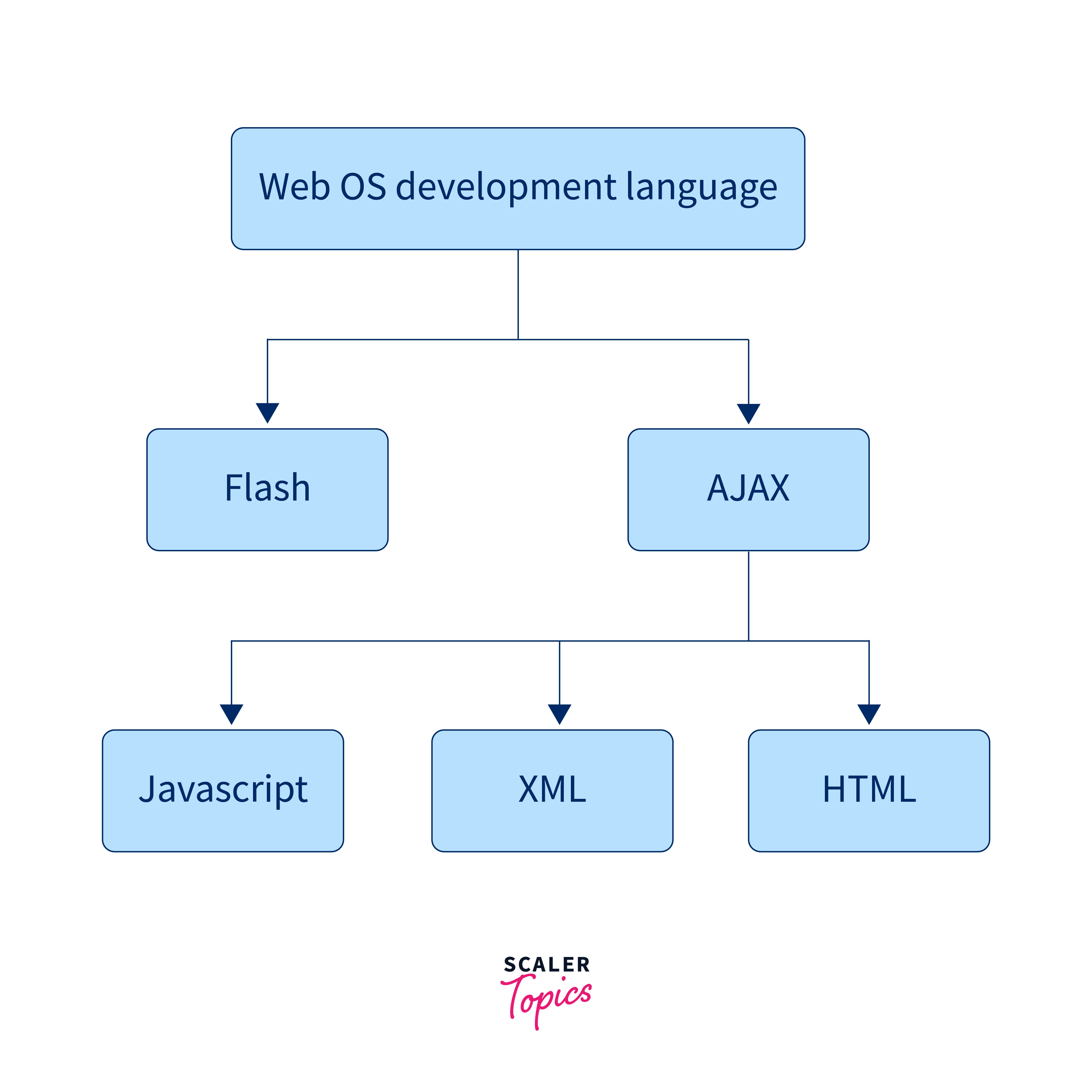Web Operating System
Overview
An operating system is a software that acts as an interface between computer applications and hardware. The web operating system is a user interface based on the internet that allows users to access computers locally and through the internet.
What is a Web Operating System?
The web operating system is a user interface based on the Internet that allows users to access computers locally and through the Internet. It is a dummy operating system that does not directly interact with computer hardware. Instead, it depends on a traditional operating system for its work. It acts as an interface for systems that are distributed, for instance, distributed cloud computing systems like a cloud.
How do Web Operating Systems Work?
Let's take an example to understand the workings of the operating systems. A computer consists of many application like a calculator, games, calendar, etc. it also has apps that stores data such as files, image, music, videos, etc., these data are stored hard disk of the computer. When a user tries to communicate with the computer, it can be done using a user interface and a keyboard or other device. This is normally how the computer works.
Now let's say that you’re at your office or any remote place, and you have to access a file on your computer at home. How will you access that file? Well, this is where the web operating system comes into the picture. It acts as a dynamic computer through which remote files in other operating systems can be accessed remotely. The internet and computer are needed to access a file remotely.
This is because cloud servers use the web to upload files to the client server. Since the files are now stored in the cloud, users can access them remotely from anywhere.

Why use a Web OS?
When accessing applications hosted on a remote server, the web operating system simplifies the user experience. Web OS behaves like the OS of a desktop, easy to use and intuitive because many people are familiar with the desktop OS. The users don’t have to upgrade the system because Web OS offloads the storage system, application, and processing power to the remote server.
It also makes sharing of data easier between computers of different OS. It provides an interface where any computer can create, modify, and access a file remotely. It also has a cross-platform feature with which users can access or use both the OS, MAC, and Windows. Due to this, the collaboration of projects becomes easier as users are allowed to share files from anywhere and on any operating system.
How to develop a Web OS?

- The ideal Web OS should take less space and have a lightweight user interface to load quickly. This is possible if we use development tools like Flash and XML.
- These tools are used for making the user interface interactions with the help of JavaScript and to put animations, graphics, images,s, etc.
- Flash makes video streaming applications a quick and easy-to-use interface. Hence it is a widely used tool for the development of web OS.
- Another great tool is XML, also known as AJAX which is a pack of different development languages used for web development.
- The asynchronous communication feature of AJAX to keep information systematically in the virtual box.
- The XML is used for keeping together the similar types of files an application installed in the OS can be connected to the server by using JavaScript.
- By using the asynchronous communication of AJAX, data can be transferred in small packets from one computer to another as and when needed.
- This is how WEB OS is developed. The tools like AJAX and Flash have the capability of cross-platform, which can be used on any OS.
Features of Web Operating System
Different features offered by web operating systems are:
- Storing data like video, image, and audio
- Application can be installed
- Storing documents
- Storing contacts, notes
- Calendar and reminders
- Calculator
Conclusion
- The web operating system is a user interface based on the Internet that allows users to access computers locally and through the Internet.
- It is a kind of dummy operating system that does not directly interact with computer hardware; instead, it depends on a traditional operating system for its work.
- It acts as an interface for systems that are distributed, for instance, distributed cloud computing systems like a cloud.
- The ideal Web OS should take less space and have a light-weighted user interface to load quickly. This is possible if we use development tools like Flash and XML.
- These tools are used for making the user interface interactions with the help of JavaScript and to put animations, graphics, images, etc.
